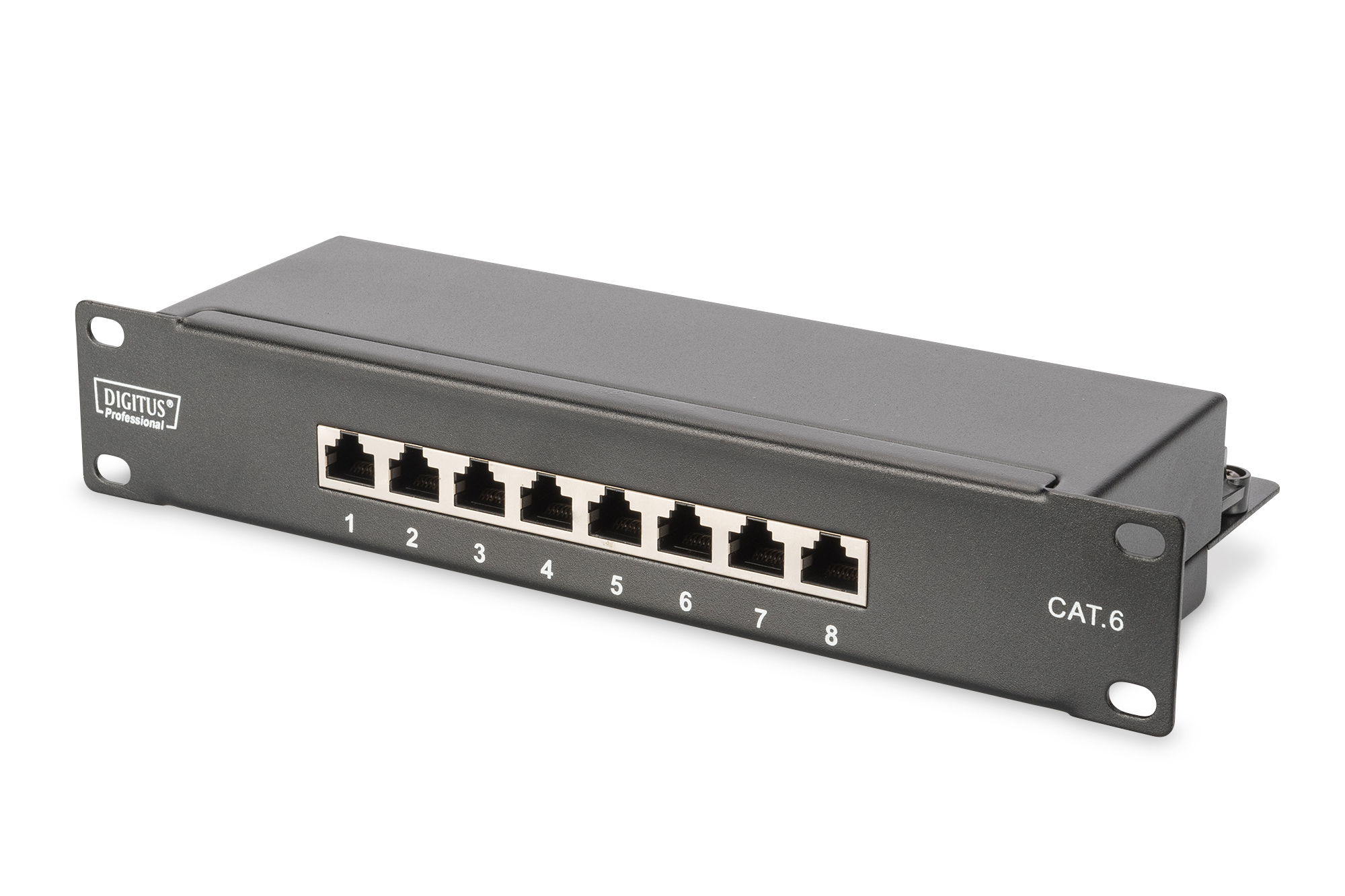


A patch panel with eight ports should suffice for most home networks, but it’s easy to expand when you need more capacity. You’ll simply need to repeat the sequence multiple times for your various ports. If you can wire an Ethernet jack, you can wire a patch panel. When a malfunction occurs, smaller groups of ports mean fewer wires to connect to a new module. However, panels include modules with eight ports because it’s easier to perform replacements and maintenance on smaller groupings. The number of ports on a panel is not subject to physical limit other than the room to place them. However, panels can include 96 ports, and some specialty versions reach 336 or more. Most patch panels have either 24 or 48 ports.

Ports are a component of patch panels because they provide physical entry and exit points for data. All patch panels are subject to the same standards that provide signal and speed performance ratings for other network components. There’s no question, however, that fiber optic patch panels cost more. The primary role of the panels is to direct signal traffic rather than move signal at a required speed. While fiber is much faster than copper, networking professionals disagree on whether the materials show significant performance differences in patch panels. Patch panels can be part of networks with either fiber or copper cabling. In a business environment, patch panels are the smart way to quickly transfer communications lines from office to another. By centralizing cables in one place, patch panels make it easy for network administrators to move, add or change complex network architectures. For businesses, patch panels are often around found in areas that house telecommunications equipment and they play a central role in network functionality. Front-access panels work especially well in tight spaces. By using a front-access patch panel, for instance, you can get to all your cables and terminations easily. For most newer patch panel designs, the main focus is on cable management. The primary advantage of using patch panels, also known as patch bays, is improved organization and easier management of your wired network. They’re frequently used in industries that require extensive sound equipment because they work well for connecting a variety of devices. Troubleshooting problems are simplified with patch panels since they provide a single location for all input jacks. To arrange circuits using a patch panel, you simply plug and unplug the appropriate patch cords. Those lines, in turn, allow LANs to connect to wide area networks or to the Internet. When patch panels are part of a LAN, they can connect computers to other computers and to outside lines. Patch panels bundle multiple network ports together to connect incoming and outgoing lines - including those for local area networks, electronics, electrical systems and communications. Each port connects, via a patch cable, to another port located elsewhere in your building. So what is a patch panel you ask? A patch panel is essentially an array of ports on one panel. If you want to set up a wired network that includes multiple wall ports in various rooms, a patch panel in a central location can provide a simple, neat and easy-to-manage solution. But to take advantage of the blazingly fast Internet now available in most homes and businesses, a wired network often will allow you to achieve speeds much closer to the promised maximum. For example, if the technical information of a PoE network camera specify 18 watts maximum power consumption, calculate with 20 watts to be on the safe side.These days, it seems that just about everything is wireless. Tip: Be conservative and leave enough room for error. Typically this information can be obtained from the technical specifications of the device, but sometimes you may need to contact the manufacturer. Type of PoE (PD) device: The maximum power consumption of the PoE device you wish to connect is a crucial factor.Special attention should be paid the the technical specification of the PoE repeater. Type of PoE extender (2): First, not all PoE repeaters can be daisy-chained, and second, the amount of power the extender draws varies.The higher the input power, the further you can extend the signal by means of cascading more PoE repeaters. Type of PoE extender (1): Ultra PoE Extenders can take from 60 to 90 watts of power and whereas High-Power PoE+ Extenders are typically limited to an input of 30 watts.Exactly how far you can extend the PoE connection depends on various factors.


 0 kommentar(er)
0 kommentar(er)
